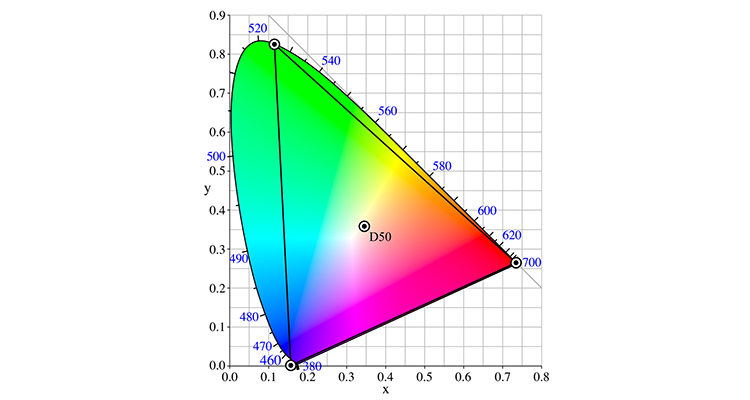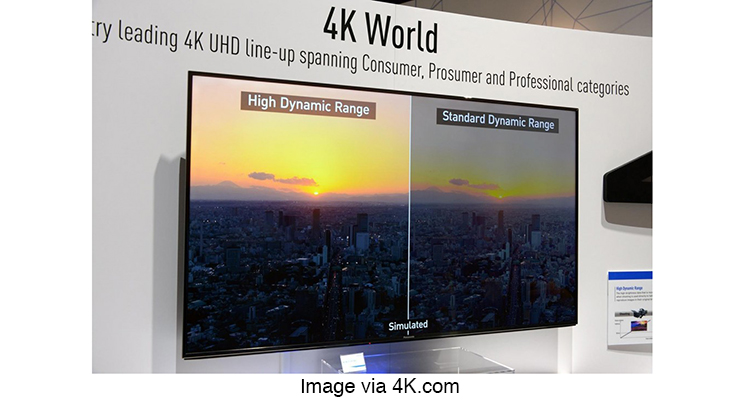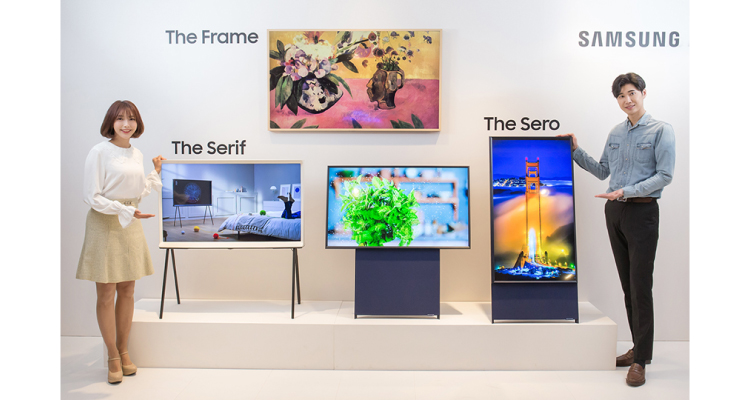HDR and WCG for ProAV?
 Anyone in the ProAV markets needs to also track what is going on in the consumer electronics world – especially what happens at CES each year. There were many important developments in virtual and augmented reality, wearables, PCs, projection, connectivity and more. I spent my time focused on another hop topic related mostly to TVs – High Dynamic Range (HDR) and Wide Color Gamut (WCG). And there was a lot of news to report.
Anyone in the ProAV markets needs to also track what is going on in the consumer electronics world – especially what happens at CES each year. There were many important developments in virtual and augmented reality, wearables, PCs, projection, connectivity and more. I spent my time focused on another hop topic related mostly to TVs – High Dynamic Range (HDR) and Wide Color Gamut (WCG). And there was a lot of news to report.
For the uninitiated, HDR refers to the expansion of the contrast range of the display to allow high peak brightness levels and darker black levels. TVs and a few projectors with these capabilities are available now and a lot more are coming. These are mostly aimed at home use, but they will start to drive interest and demand in commercial and professional applications as well.
Wide Color Gamut refers to increasing the range of colors that can be displayed on the display beyond the stand color gamuts used in content today. In HD video content for example, the standard color gamut is BT 709, while for web content is sRGB and for cinema content, DCI-P3. The new UHD specification calls for a much bigger color gamut called BT 2020. WCG generally refers to display that can produce a color gamut close to DCI-P3 or larger (there is no real definition).

HDR and WCG are often closely coupled in content and in display solutions. Projectors and flat panel displays I have seen with HDR and WCG show a dramatic visual performance difference compared to Standard Dynamic Range (SDR) and 709 color gamut displays. The brighter areas of the images pop, there are more details in the shadows and the colors are more saturated and appear richer and brighter. You can see these improvements from across the room – something you can necessarily do when comparing a FHD display to a 4K one.
Just prior to CES, I wrote a lengthy white paper covering all of the HDR and WCG ecosystem issues from content to distribution to display. You can download the white paper for free here.
After attending CES, I wrote another report on all the news in the HDR and WCG ecosystem, including a nice table of all current and announced TVs with these features. This is also available for free here.
So what did I learn and what is the take away for the ProAV markets? Here is what the industry seems to saying.
Hollywood is embracing HDR/WCG and with all seven major studios creating content for the cinemas in the format and some now agreeing to create content on Blu-rays and for over the top providers. This will be primarily movies and episodic content to start, but work is also ongoing to extend this to live TV broadcasting.
For distribution, the first of the new Ultra HD Blu-ray plays can now be pre-ordered for $399 from Samsung and Philips. They will support HDR/WCG content playback. Over the top HDR/WCG/4K content is already flowing from Amazon and Vudu with Netflix and YouTube poised to enter the market soon. Dish says it will support HDR/WCG/4K content in 2016 so other satellite and cable providers won’t be far behind.
Over the air transmission will lag however, as the new ATSC 3.0 standard needs to be approved and adopted by the industry. However, CES 2016 was a milestone in this area as the first live transmission of a 4K/HDR/WCG signal was sent from a tower in Las Vegas to TVs on the CES show floor (Samsung and LG).
In TVs, it is clear that 4K/HDR/WCG models will be widely available in 2016. These will be premium models, but expect this to roll into mid tier models in the next year or two. Since many commercial and professional installs use TVs, 4K/HDR/WCG may start to be on the minds of some of these customers.
While organizations like the HD Alliance are trying to help in creating a great experience and educating sellers and buyers of 4K/HDR/WCG products, it is going to be very confusing for everyone.
Consider the table below from the tutorial white paper. This shows that content will be mastered with three different color gamuts and can be played back on TVs or projectors with a continuous range of color capabilities. How the colors are stretched or compressed will vary widely based upon the sophistication of the color processing in the display or outboard processor box.
A similar thing is going to happen with the HDR component. This will be mastered at several levels and passed to TVs or projectors that have a continuous range of peak luminance and black level capabilities. How this well this “tone-mapping” is done will again be highly device dependant.
And to add even more confusion – legacy SDR/709 content can be processed to make it more “HDR/WCG-like” – even if played back on a TV with SDR/709 capabilities or something a little better.
The bottom line – you better start to bone up on these technologies now so you can intelligently answer the questions that will be asked later.





